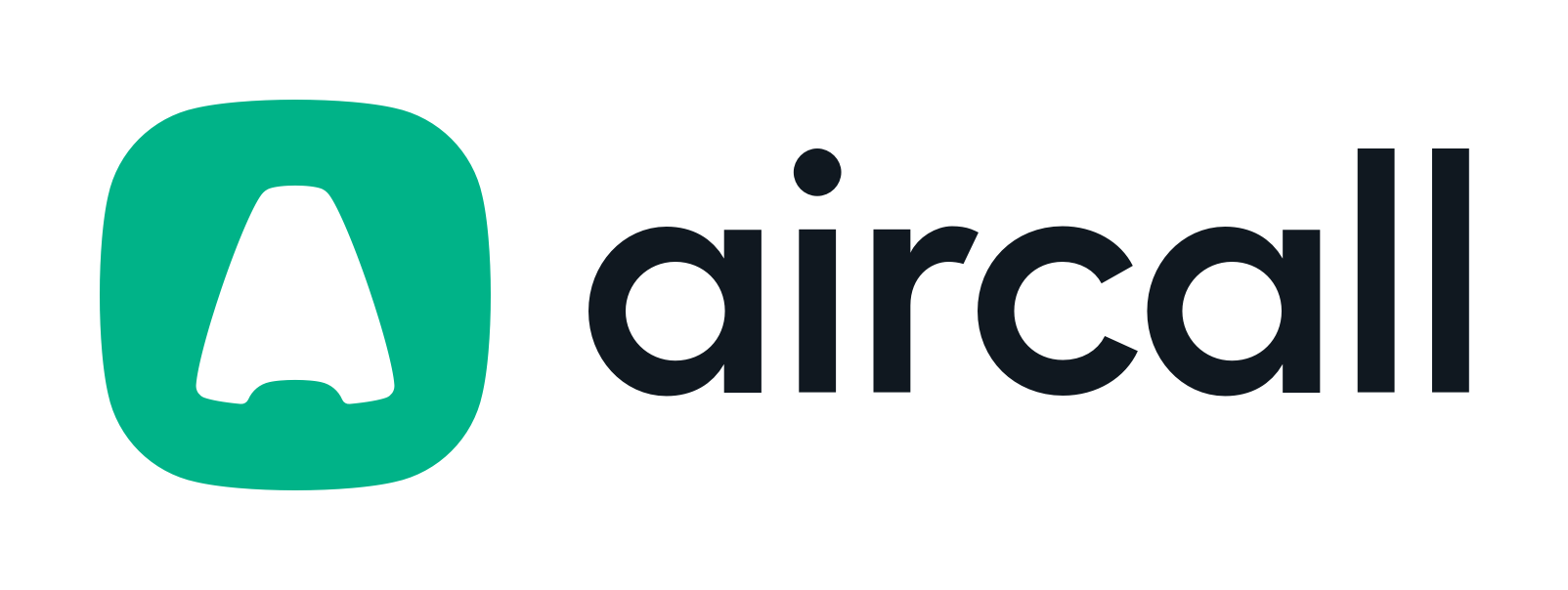![7 Ways to Get a List of Cell Phone Numbers [Tools]-festured-image](https://6052405.fs1.hubspotusercontent-na1.net/hubfs/6052405/2023%20-%20Blog/EN%20SEO%20blogs%20%28Product%20use%20case%20keywords%29%20%5B%2B%20FR%2c%20ES%20and%20DE%20variations%5D/List%20of%20cell%20phone%20numbers/EN_list-of-cell-phone-numbers-card.png)
How to Write a Good Sales Email - 6 Tips From an SDR Coach

Yo, it’s Morgan J Ingram here, and this is sales email 101. 😎
I’ve trained SDR teams at Snowflake, Zoom and Salesforce to get better at cold prospecting. You have got to refine your tactics because, let’s face it: we all know the “spray and pray” approach is dead. RIP.
Great cold emails are now highly targeted. It’s less about your product and more about the prospect.
Here are my six tips to get your emails opened and read:
- Write a great subject line.
- Don’t drag out your opening line.
- Make your body copy value-led.
- Think about your CTA with clear next steps.
- Remember, it’s all in the follow-up.
- Take my value wave for email best practices.
1. Write a great subject line
I love cold emails that start with “hope all is well”.
It puts a smile on my face.
Ok, that is a complete joke.
Your subject line is what’s going to make your prospect open your email in the first place. Or send it straight to the trash can. It’s up to you! 🚮
The subject line is the first thing your potential customer sees, so it’s gotta spark curiosity.
I tell SDRs I train that they need to make it short and relevant to your prospect. Skip the generic stuff like “check this out” and just get straight to the point.
Here’s an example of what subject line has worked well for me. You put: The prospect’s first name <> Your company’s name (e.g. Morgan <> Kaspr).
I like to use this subject line because it leads to an internal email the prospect would respond to. Plus, potential customers see the greater than, less than sign as a connector.
If it fits your vibe, you could also throw in a few emojis, but don’t go overboard. The goal is to get the email opened, so keep it aligned with who you’re talking to.
2. Don’t drag out your opening line
Once your email is opened, you’ve gotta get the reader’s attention. Quick!
Your opening line should be clear, engaging, and relevant to the potential prospect.
Here are some examples I like to use. I want to mention something interesting:
- “Noticed this on your website.”
- “Saw your recent LinkedIn post about X.”
- “Liked your recent announcement about X.”
This shows that you’ve done your homework and you’re not just sending out generic emails into the void.
💡To help you save time, steal this process from Troy Munson, Account Executive at Proofpoint.
It’s about using ChatGPT 4 to research prospects.
Here’s how it goes:
- Hop on ChatGPT 4 (not ChatGPT 3.5).
- Ask this question: “I work for X company, I’m targeting X company. Give me five reasons why X person would be a good fit based on any articles, podcasts or videos they’ve been in.”
- ChatGPT 4 will feed back all the links to the content the person has been mentioned in. Plus all the links to the content itself.
Following tips like these has been a real time-saver for Troy, making outreach more personal while saving time. Cool, hey? 😎
3. Make your body copy value-led
SDRs, you need to stop asking for “30 minutes next week”. A cold email is supposed to provide value, duh!
I know that booking a meeting is what every SDR wants. But, it can be counter-productive.
You need to detach from the outcome and attach yourself to the process of asking the right questions. Something you won’t be able to do if your only goal is getting a meeting booked.
The key is to put yourself in your prospects’ shoes and ask, “What’s in it for me?”
To do this, you need to reverse-engineer your value proposition.
Take a spreadsheet out and write:
- What are the five to seven problems my prospects face?
- How can I solve them? (one to two sentences is enough here).
By doing this tactic, you’re not focusing on features and functions.
Instead, you show how you serve the prospect and what they gain from replying.
👉 Here’s a list of Mailshake alternatives for sending your cold emails!
4. Think about your CTA with clear next steps
This is my hot take on getting more replies to your cold email. Instead of asking for time as a CTA, ask for interest. 🔥
You can make the next steps obvious once the prospect has replied to say they are interested.
Try these:
- “Would you be open to learning more?” or,
- “Are you curious to have a deeper dive on this topic?”
By asking for for interest, you create less resistance and make it easy for the prospect - rather than committing to a set time.
5. Remember it’s all in the follow-up
Writing fire emails, but no one is responding to them?
I’ll share two of my all-time favorite tips on how you can boost those reply rates.
First, please don’t just say, “Hey, just following up” or “In case you didn’t see my email”. They’ve probably seen it, or it wasn’t even relevant.
What you’ve got to do here is something called a nudge. It’s asking for people’s feedback. So, what I’ll do is say “Hey Sally, any feedback on my email?”
This typically leads to a pretty high response rate of up to 10% across the board.
Now, onto a neat follow-up tactic I learned from John Barrows, CEO at JB Sales. It’s called the “Did I lose you?” and is surprisingly effective, with a 70% conversion rate for me personally.
Here’s how to do it yourself:
Hit “reply all” to your email, change the subject line to “Did I lose you?” and leave the body blank.
Why? When your recipient sees all those unanswered messages, they might feel a gentle push to respond.
Just a quick heads-up, though: This tactic works best if you haven’t already had a conversation with the person. After all, you can’t lose someone you never really had, right?
6. Use my value wave for email best practices

Get the data
The pretty dang obvious first step, hey?
To send emails, you need email addresses.
You’d be surprised how many sales reps still don’t have the tools they need to access this contact data easily.
This is where a prospecting tool like Kaspr comes in.
And it’s completely free to try it out.
Then all you need to do is:
- Head over to your prospect’s LinkedIn profile.
- Click on the Kaspr LinkedIn Chrome Extension.
- Access the email address, right there.
If you find people aren’t connecting or have the wrong details, add a step in your outbound sequence to use Kaspr to enrich your current data.
👉 Here’s how salespeople like Thibaut Souyris, CEO & Founder at SalesLabs are using Kaspr in daily prospecting.
Change the aim
Why are you sending this email? No, seriously, why?
Don’t say: “Because they’re on my list.”
Senior leaders receive 100s of emails per day.
To be value-based, you’ve got to stand out. This means you’ve got to be explicit in why you’re reaching out.
The ultimate goal of a cold email is to get a reply. That’s it. 💯
As Amy Volas is a big fan of saying, ask yourself, “why does this even matter?”. This will make sure you’re sending an email with value.
Sending one email is very rarely going to get a meeting booked. You might get lucky once or twice but don’t bank on it. You should aim to pique curiosity, deliver something relevant to the prospect, and start a conversation.
This could look like the below. 👇
/Cold%20email%20teardown%20get%20a%20reply/EN_cold-email-teardown-get-a-reply.webp?width=500&height=352&name=EN_cold-email-teardown-get-a-reply.webp)
- Effective sales emails are short.
- Make it about the prospect, not your product.
- Pique a response, nothing else.
Make it relevant
Personalized sales outreach is partly about relevancy. For your emails to work, you need to stop sending the same message to 100 people every day.
For the message to resonate, your prospect needs to know:
- Why you’re reaching out.
- Why it’s important to them.
- What actions you can take to address their pain points.
So what can you do to address all these points? Well, there’s a winning formula from Lavender, and it goes a little something like this…
Context = {observation} + {insight or problem}
So what could this look like?
- Observation. Find accounts you’d like to reach out to. This is all about matching your ICP, buying triggers, and personas. Think of key signals like new team leaders, new markets, and growing teams. Here are tips for setting up Sales Navigator to always feed you leads like this.
- Insight or problem. Now’s your time to carefully craft your email. Focus on one key area or issue; this makes your wish to help more genuine. Remember, you’re reaching out because you’re confident that you can have a relevant conversation with them.
Here’s an email teardown of what this formula in a personalized email could look like. 👇
/Cold%20email%20teardown%20make%20it%20relevant/EN_cold-email-teardown-be-relevant.webp?width=500&height=352&name=EN_cold-email-teardown-be-relevant.webp)
Cell-phone first mindset
The shorter, the better. 💯
If you’re sending an email from your dual monitor setup, remember that most people read emails on mobile devices.
Many outbound sales software that supports email outreach will have preview options so you can see how your email will look across desktop, tablet, and mobile. Don’t underestimate the importance of formatting. No one likes jumbled sentences, and it could do wonders for your reply rates.
Use short sentences and get to the point fast. If it doesn’t add benefit to the prospect, cut it out. No, you definitely don’t need to say, “I hope you’re well”.
You also don’t need to explain your role in your company, or how your company has been serving clients for the past 30 years. If they want that info, they can find it on your website.
It could look like this. 👇
/Cold%20email%20teardown%20keep%20it%20short/EN_cold-email-teardown-make-it-short.webp?width=500&height=352&name=EN_cold-email-teardown-make-it-short.webp)
Here are my top tips for keeping it snappy:
- Clear, short sentences.
- Cut the buzzwords, acronyms, and complex language.
- Keep it below the 10th-grade reading level.
- The aim of every sentence is to get them to read the next one.
- Test your subject lines out.
- Preview text counts; it’s the first thing your prospect will read.
- CTAs can be as simple as asking a question, don’t make them jump through hoops.
- Remember, your email aim is to get a reply.
Cold email examples that work
Trust me, I know the struggle of cold outreach.
But fear not, I’ve literally trained tons of SDRs on how to prospect better!
And I’m about to dish out some of my absolute favorite persuasive cold email examples.
The GIF follow-up email
Fun fact: I received this email for my “Morgan Reacts” series that I do with Kaspr, you should check it out. 😉
And I’ve got to admit, seeing the GIF in this email cracks me up.
But hey, it’s wise to get a second opinion before you hit that send button. You know, some things are hilarious, while others might just make people cringe.
Remember, going overboard with the fun stuff might backfire and turn your email into a hot mess. You really don’t want that…
I think this email is gold because that GIF was carefully chosen. And the subject line, “trying to get on Amy’s radar,” followed by “just kidding,” is a stroke of genius.
So, don’t hesitate to step out of your comfort zone. Just make sure it’s all in good taste.

The elephant in the room email
Sometimes a simple name-drop can get cold prospects interested.
If you notice a prospect checking out a competitor’s product, there’s a chance they might be open to yours, too.
All it takes is a sales email that highlights a product’s main selling points.
Just be sure to do it in a way that shows why yours stands out.
Here’s an example. 👇

The revive ghosted deals email
This is one that I really like, and I’ve taken it from Troy Munson.
He’s done a really good job here on reviving ghosted deals by giving them a soft out.
Instead of making them feel like a failure by saying: “Have you given up on this?”.
Troy says they’re no longer interested and that it’s not a big deal if they aren’t.
Here’s how he does it. 👇

The “I saw you liked this post” email
Shoutout to Thibaut Souyris on this message.
I personally love the “Opposed to learning more?” question at the end.
It’s a negative reverse-selling statement that helps pique curiosity and encourages engagement from the recipient.
No fluff here; just gets straight to the point with a nice, short message.
What makes it work?
- It proves you’ve done your research.
- It’s relevant to the prospect.
- It offers a solution to a pain point.
- It’s easy to reply to.

The “not the right time” email
You can’t help timing.
It doesn’t make sense to send a break-up email to someone you’ve never spoken to. It also makes it tough to re-engage at a later stage.
Instead, you should aim for a more relaxed goodbye email.
Toss in some helpful resources, like a blog post or YouTube video.
It leaves a good impression and makes the prospect more likely to swing back to you when they need help.
And oh, don’t forget to drop your LinkedIn profile in there as a subtle hint. I find that people tend to click on it, giving you a chance to connect there.
Here’s what I do to stay engaged with prospects when they say the timing is not right. 👇

Over and out on good sales emails
And there you have it, ya’ll!
Now you know my most important steps for how to write a good sales email.
To recap:
- Keep it concise; nobody wants to read a novel - always make your emails are cell phone friendly.
- Write a subject line that creates curiosity - My favorite uses the prospect's name and my company name with <>; people see it as a connector.
- No one, I repeat, no one wants to read an email that starts “hope you are well” - Show you’ve done your research and start with something relevant..
- You shouldn’t be asking for 30 minutes, you should be asking for interest.
- Emails should be used as part of a multi-touch cadence - Remember it’s all in the follow-up, and you should be using other channels too *cough* the phone *cough*.
Remember, every email is an opportunity to make a connection and drive sales.
Want more tips for writing sales emails? Check out some more of the series I’ve done with Kaspr.
💡The Spark - My step-by-step guide for writing the perfect cold emails - great if you’re a new SDR or what a refresher.
💡 “Morgan Reacts” - Where I react to different prospecting materials, could be an email, could be a cold call. Check it out!
Accurate European contact data
Get accurate data for your prospects and connect with your favorite sales tool








